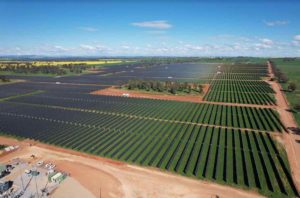International carbon prices have tumbled amid fears that a Covid-19 induced economic downturn will curb industry demand for carbon allowances, causing a heavy sell-off by investors.
In Europe, EUA prices fell over 11 per cent last week, reaching a low of €15.24/t (A$28), down from €29.94/t ($A54) in mid-July 2019.
Locally, the Australian Carbon Credit Unit (ACCU) spot price has continued to trade between $16.50-17/tonne since late-February, at low volumes, down from a four-year high of $17.50 in December-19.
We view the local ACCU market as largely inoculated from the economic consequences of COVID-19, with reduced industrial output unlikely to translate into lower demand for carbon offsets given the current design of the Commonwealth’s Safeguard Mechanism.
Under the safeguard scheme, facilities are issued an “emissions baseline”. Rather than decline over time, however, baselines are set in line with forecast production and emissions intensity, and may be updated annually to reflect actual production.
Given baselines are flexibly designed to align with production, the scheme does not create accountability for large facilities to reduce emissions, or offset emissions growth.
Unlike the EU ETS, any growth (decline) in emissions will therefore not exceed an emissions baseline or trigger increased (reduced) demand for carbon offsets.
Potential for lower baselines and tighter compliance in FY20-21?
Given industry emissions baselines are set in line with forecast production, covered facilities will be able to avoid any reduction in their emissions baselines attributed to lower actual production over FY19-20.
For example, were baselines be set in line with reported emissions for FY19-20, which may be lower due to reduced economic activity, any rebound in production would force liable entities to acquire larger volumes of offsets than they would have if FY19-20 production was unaffected by COVID-19.
However, given baselines are currently set by forecast, not reported production, this scenario is unlikely to transpire, with forecast production expected to remain higher than reported activity, maintaining compliance headroom.
As noted in earlier updates, the lack of accountability for large facilities to reduce emissions, or offset emissions growth remains the Achilles heel for Australia’s longer-term climate commitments, while limiting the operation of a robust local market.
How, or if, the government’s current review of the Emissions Reduction Fund (ERF) and safeguard mechanism framework could seek to address the demand void from industrial sector remains to be seen, with most consultative focus on additional measures to stimulate supply, rather than the more obvious elephant in the room – the alignment of industry emissions reductions with Australia’s long-term commitments under the Paris Agreement.
Short- and long term-term price influences
While any downturn in economic activity is unlikely to directly impact demand, and the carbon spot price, broader uncertainty may translate into lower carbon prices, with the economic consequences of Covid-19 likely to be wide and significant, potentially impacting voluntary demand and traded volumes as proponents minimise or defer expenditures.
Longer term market dynamics are underpinned by a projected uptick in both ACCU issuance and scheduled deliveries from 2020 to 2022.
After this point, the Climate Solutions Fund is anticipated to be made available (from the start of the 2020-21 financial year), acting as the major source of demand though 2026.
While in the near-term, industry compliance demand is largely immaterial to price formation, under our alternative cases covered sectors are modelled to play a larger role in reducing emissions consistent with a net-zero emissions pathway.
Longer-term price scenarios are therefore underpinned by the availability (and cost) of internal and external abatement, and the least-cost combination of abatement to meet targets on a sector-by-sector basis. The marginal cost of abatement at various target levels therefore remains a key long-term price marker for large emitters and offset proponents.
To access Reputex’ current short- and long-term outlook for the ACCU spot price, supply and demand please click here. To view our daily ACCU spot prices click here. Our quarterly carbon market outlook is published under our Australian Carbon Market Intelligence service. To learn more please click here, or contact our Research and Client Services teams here.









